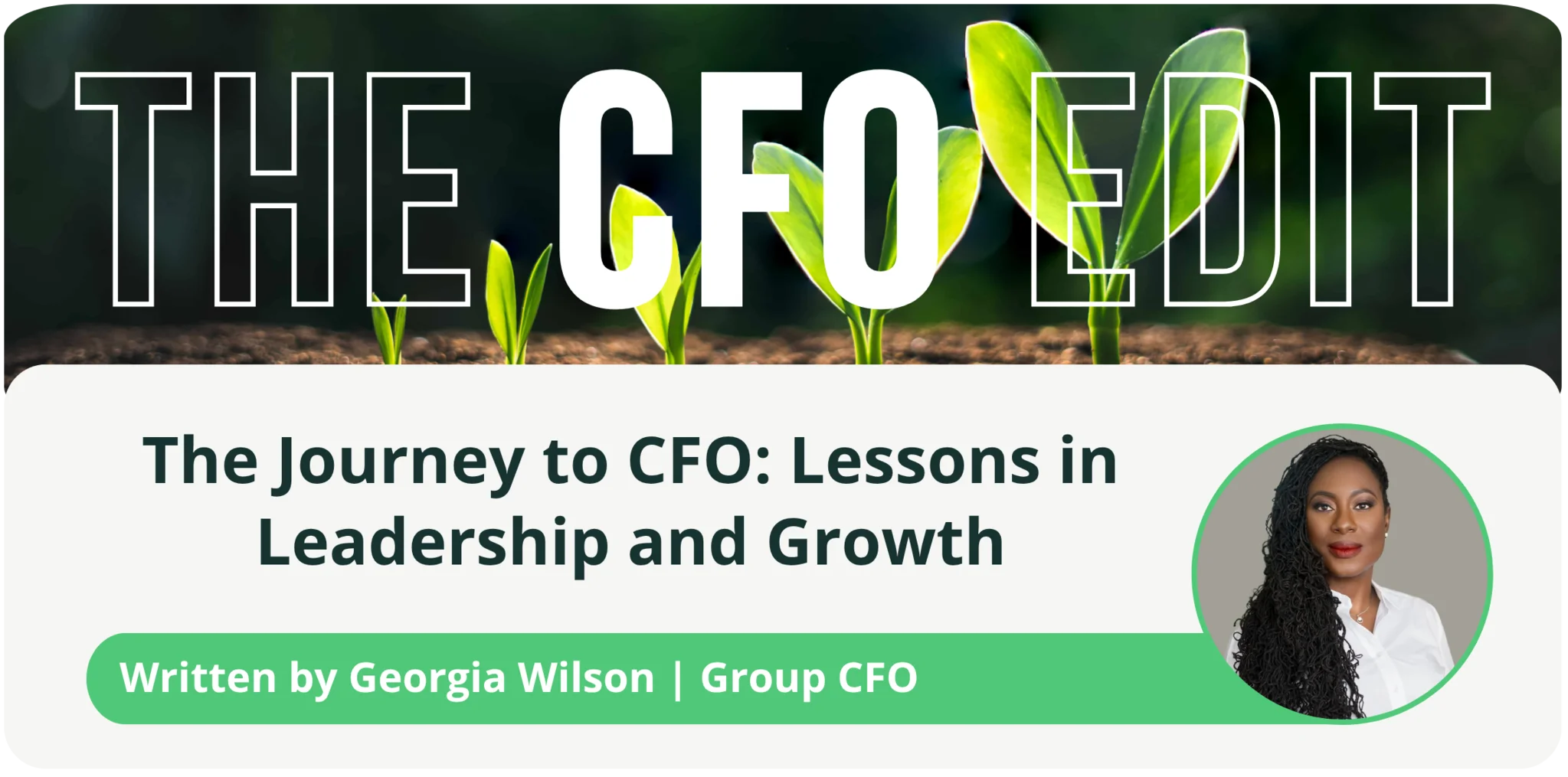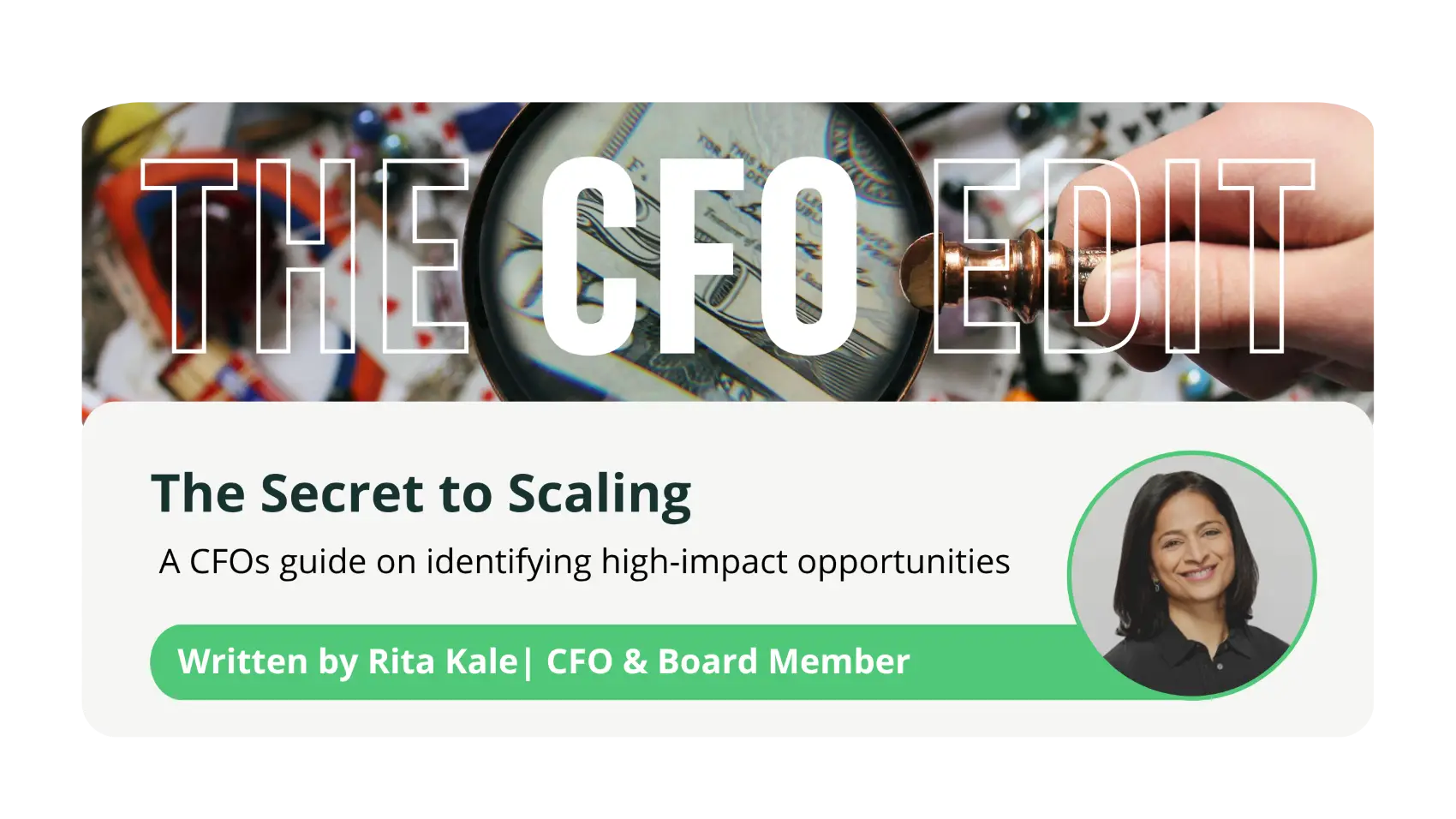
The Secret to Scaling | Identify High-Impact Opportunities
07 Jul, 20257 minutes
Throughout my career as a CFO, working across fast-growing startups to established companies, I’ve witnessed one constant challenge that crosses industry, geography and company size: the struggle to evaluate and prioritize business opportunities. Whether you’re a three person startup deciding between your first two product features or a Chief Financial Officer of a global company guiding a billion dollar market expansion, the problem is the same: how do you systematically identify, evaluate and pursue the most important opportunities that will drive your business forward?
Opportunity Abundance into Strategic Focus
Every company, whether a startup or a global enterprise, has a constant stream of potential opportunities. New markets, emerging technologies, evolving customer needs, and shifting competition all present growth opportunities. The real challenge isn’t finding opportunities, it’s deciding which ones deserve your limited time, capital, and talent. Which initiatives align with your company’s goals, have the greatest impact and can be executed with minimal disruption?
In larger companies, the sheer volume of options can overwhelm teams leading to indecision and missed momentum. In smaller companies, the risk is different: acting quickly without thorough evaluation can result in wasted effort and overlooked potential. Both scenarios lead to the same outcome, resources are spread too thin and real growth opportunities slip away.
This can be solved with a systematic process of identifying, evaluating and ranking business initiatives based on alignment with company goals, market potential, and execution feasibility. This includes everything from new product development and market expansion to technology investments, strategic partnerships, and operational improvements.
Opportunity prioritization sits at the intersection of strategy and execution. It’s the bridge between your company’s vision and the practical decisions that get you to that vision
The process involves three key components:
Comprehensive Opportunity Identification: Establish channels for ideas to flow from all levels of the organization, from customer-facing teams who hear market feedback firsthand to technical experts who understand emerging capabilities.
Rigorous Evaluation Framework: Apply consistent criteria to each opportunity’s potential impact, required investment, probability of success, and strategic alignment. Expert input is essential for meaningful evaluation.
Dynamic Prioritization: Objectively evaluate and shortlist the most relevant and impactful initiatives. Senior leadership should own this process and support disciplined execution. Re-prioritize opportunities as new information and changing business conditions demand.
By combining a clear view of available resources with a structured approach to opportunity management, any company can focus on what matters most and drive real growth.

Why Agility Matters
Opportunity management is just as important for a 10,000 person company as it is for a 10 person startup. The scale and complexity may be different but the core principles are remarkably similar.
Large companies have the resources to pursue multiple opportunities at the same time but this advantage can become a liability without proper prioritization. I’ve seen big corporations spread themselves too thin, launching initiatives that compete for the same customers or dilute brand focus. The complexity of coordination across multiple business units and stakeholders makes disciplined prioritization and execution even more critical.
Smaller companies face the opposite challenge: limited resources mean every decision has outsized consequences. A wrong bet can set back a startup by months or years. But smaller companies have a significant advantage in their ability to pivot quickly when priorities change.
The key differentiator isn’t size, it’s agility. Companies that build flexible, opportunity management processes can adapt to changing market conditions, customer needs and competitive landscapes. They avoid the trap of rigid annual planning cycles that lock them into outdated priorities for months at a time.
How to Achieve Agility
To truly embed agility into your process you must design for responsiveness, not just thoroughness. This means building regular review cycles into your process, not just annual planning sessions. Quarterly priority reviews allow companies to adjust course based on new market information, execution learnings and changing competitive dynamics. This ensures resources flow to the most promising areas.
Agility also means accepting that some opportunities will be deprioritized or abandoned as new information emerges, or early prototypes don’t produce expected outcomes. This isn’t failure, it’s intelligent resource management. The sunk cost fallacy has killed more value than most companies realize. Building clear exit criteria into your evaluation process helps avoid throwing good money after bad.
The CFO's Strategic Role in Opportunity Management
As finance leaders we occupy a unique position in the opportunity evaluation and prioritization process. Unlike functional leaders who naturally tend to advocate for initiatives within their domains, CFOs have a cross-organizational perspective that’s essential for objective prioritization.
Our role extends far beyond financial analysis. We are strategic advisors who help companies balance ambitious growth goals with realistic resource constraints. This involves several key responsibilities:
Developing Objective Evaluation Frameworks: Create standardized criteria that remove bias and personal preferences from the decision-making process. This might include market size analysis, competitive assessment, financial projections, and resource requirement evaluations.
Facilitating Cross-Functional Dialogue: Bring together diverse perspectives from sales, marketing, operations and technology teams to ensure comprehensive opportunity assessment.
Managing the Portfolio Balance: Help companies maintain the right mix of short-term revenue opportunities and long-term strategic investments. This includes balancing high-certainty, incremental improvements with higher-risk, transformational initiatives.
Enabling Agile Resource Allocation: Design funding mechanisms that allow for quick pivots when priorities change, including stage-gate processes that release resources based on milestone achievement.
Communicating Strategic Rationale: Translate complex strategic decisions into clear narratives that align stakeholders around priorities and build organizational commitment.

Practical Frameworks
While the specific framework you choose should match your company’s complexity and resources, several proven approaches work across different company sizes:
The Three-Horizon Model: Particularly effective for larger companies, this framework helps balance immediate revenue needs (Horizon 1) with emerging growth opportunities (Horizon 2) and transformational innovations (Horizon 3).
Value vs. Effort Matrix: A simple but powerful tool that plots potential impact against implementation difficulty. This visual approach works well for smaller teams and can quickly identify “quick wins” and “money pits”.
RICE Scoring: For businesses that prefer quantitative approaches, RICE (Reach, Impact, Confidence, Effort) provides a mathematical framework for ranking opportunities.
Cost of Delay Analysis: Particularly valuable when timing is critical, this approach quantifies the economic impact of deferring specific opportunities.
The key is consistency. Whatever framework you choose (there are several others), apply it systematically across all opportunities to ensure fair comparison and reduce decision-making bias
Common Pitfalls and How to Avoid Them
Even well-intentioned opportunity management efforts can go astray. Based on my experience, here are the most frequent traps and how to avoid them:
The “Shiny Object” Syndrome: It’s easy to get distracted by the latest trend or technology without properly evaluating strategic fit. Combat this by maintaining clear criteria for strategic alignment and requiring advocates to demonstrate how new opportunities support existing goals.
Analysis Paralysis: Some companies spend so much time evaluating opportunities that they miss the window for action. Set clear timelines for decision-making and accept that perfect information is rarely available.
The “Pet Project” Problem: Sometimes influential stakeholders champion initiatives that align with their interests rather than business priorities. Objective evaluation frameworks and transparent decision-making processes help mitigate this risk.
Resource Overcommitment: Pursuing too many opportunities at once, diluting focus and execution quality is more common in larger organizations. Regular portfolio reviews help you know when to say no to otherwise attractive opportunities.
Change Fatigue: Constant pivoting can exhaust teams and create cynicism about strategic direction. Balance agility with stability by communicating the rationale for changes and maintaining core priorities even as tactics evolve.
The Competitive Advantage of Superior Opportunity Management
Companies that excel at opportunity management don’t just avoid costly mistakes; they consistently find and capture value that their competitors miss. They get into emerging markets faster, develop solutions that better meet customer needs, and allocate resources more efficiently.
Most importantly, they get organizational alignment around shared priorities. When everyone knows why certain opportunities were chosen and others weren’t, it eliminates the internal competition for resources that plagues many companies. Teams pull in the same direction, execution improves, and results follow
In my experience, the companies that treat opportunity management as a core competency, not just an annual planning exercise, are more resilient during downturns, more responsive to market changes and more effective at scaling their successes.

How to Make It Work
Success in opportunity management isn’t just about selecting the right framework, it’s about building the organizational muscle to execute it consistently. This starts with strong leadership commitment, where senior leaders model the behavior they expect by following the process, even when it means making difficult trade-offs on favored initiatives. Then clearly explain the rationale behind prioritization decisions, transparent communication helps organizations to build trust in the process and ensures they stay aligned with strategic goals.
If other members of the team contribute valuable ideas, regardless of whether those ideas are ultimately pursued, they should be recognized and rewarded, to encourage cultural reinforcement. Such acknowledgment encourages ongoing participation and idea generation.
But on the whole, opportunity management should be treated as a living system, regularly reviewed to assess what’s working, where bottlenecks occur, and how the framework itself can be improved over time. It’s not about perfection, it’s about continuous improvement in your ability to find and pursue the opportunities that matter most to your business.
Conclusion
In a world where change is the only constant, organizations need systematic ways to evaluate options, make informed decisions and adapt quickly when circumstances change.
CFOs don’t have to predict the future, we just have to build an organization that can respond to it. Opportunity management is how we close the gap between strategy and execution, so every resource decision gets us closer to what matters.


